It’s had it all this week!
Last Saturday, myself and Mrs O (in fact, two Mrs O’s - my wife and my Mum) had a thoroughly enjoyable visit to Norwich Book & Zine Fair. We met some great makers and authors (including
- go check her out), and came away with a nice selection of book/zine type goodies to add to our growing collection. I think I might need to devote a newsletter (or more than one!) to some of the photobooks and zines in my collection at some point - they’re fantastic, beautiful objects and deserve time and recognition. Anyway…Making Photos
Just outside the venue for the fair is Norwich City Hall, and whilst I was there, a protest was happening about some possible imminent cuts to social benefits in the UK, and in particular how that might affect those with disabilities. Without getting into the politics (I’m keeping my Substack well away from that!), I found the photographic opportunity on a bright, sunny day hard to resist. Using the camera I had with me, therefore, rather than miss the opportunity (always good practice), my trusty Android phone came out of my pocket and I made some photographs which, in the circumstances, I’m pretty pleased with.
Over and above the photography opportunity, however, hung the seriousness of the subject and the palpable fear and uncertainty felt by so many who were there. It was quite a sobering experience.
Talking About Photographs
Then on Wednesday, I had the privilege of being invited to visit my local library in Fakenham to talk about my recently self-published photobook, Let The Wildness Be Left. It’s a book of photographs made over 3 to 4 years around and along the major road that crosses the county of Norfolk from west to east, the A47. The book considers how ordinary, everyday human existence has impacted and transformed the land - and still does.


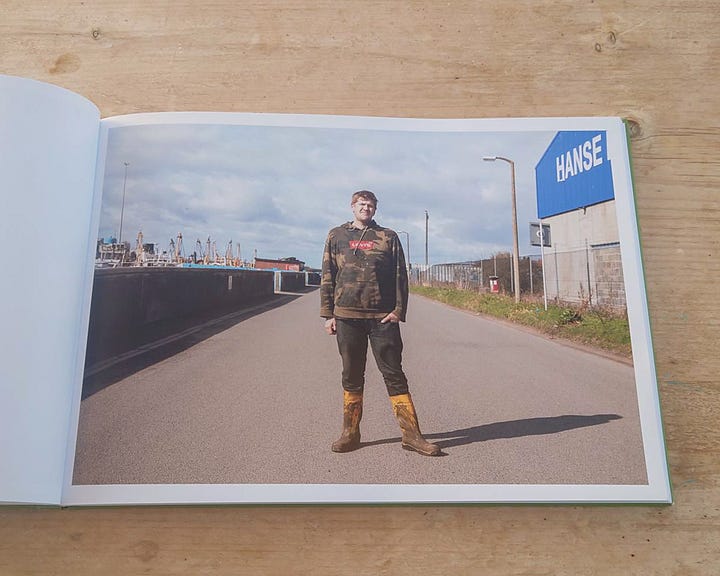

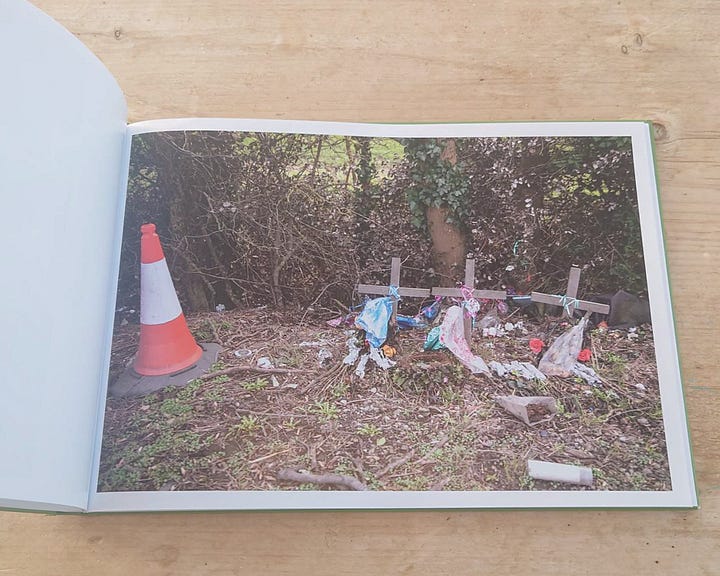
It was a very encouraging evening for me, with a good turnout of people, some excellent conversation and questions, and a few books sold. Always nice!
Writing About Photographs
And on Friday, I booked onto a workshop called Writing With Photographs. This was organised by the National Centre for Writing as part of Norwich’s City of Literature Weekend and was hosted and run by Nigerian writer and art critic Emmanuel Iduma.
As an aside, Norwich is a UNESCO designated City of Literature, part of the Creative Cities Network launched by UNESCO in 2004. It is one of 42 Cities of Literature on 6 continents in 28 countries.
Norwich has been a literary city for over 900 years: a place of ideas where the power of words has changed lives, promoted parliamentary democracy, fomented revolution, fought for the abolition of slavery and transformed literature.
Today, Norwich remains the English destination for poets, novelists, biographers, playwrights, translators, literary critics, historians, environmentalists and philosophers. A place for writers as agents of change.
[from https://nationalcentreforwriting.org.uk/norwich-unesco-city-of-literature/]
We were asked to take a photograph with us so that we could explore techniques to write short pieces “inspired by what is within and outside the frame”. This was the photograph I selected, from my current work on the Norfolk pilgrimage village of Walsingham. I wanted to learn how to begin to draw out in words what it is that speaks to me in the photographs I make, and this seemed like a good test!
The workshop was excellent, if too short - we could have done with it being all day. I picked up an awful lot from Emmanuel’s presentation, thoughts and advice, and the questions from, and discussion with, my fellow attendees.
The workshop focused primarily on family photographs, images that resonated with the person they belonged to for personal reasons. I was keen to understand the same substance from the point of view of the photographer who - like me - makes images as art objects and documentary objects. In that context, some of my key takeaways were:
Make your writing about your photographs personal - think of it as writing in your diary about the subject, or even writing a memoir.
Working with language, using words, describing your photographs, writing short paragraphs about them can be a powerful way of helping to sort, select and sequence images.
What you are doing by using words with photographs is “circling time”. To me, that means underlining what was important to you when you took that image, concentrating in on it, emphasising it, making sure you keep it and don’t lose it.
Emmanuel also spoke very usefully of a triangular process when looking at an image with a view to writing about it:
Observe the image
Reiterate known facts about the image
State the emotional appeal of the image
And the most useful piece of advice for me?
To find a way into an image with a view to writing about it, start with description. It’s much easier to give your opinions - to say what you think. But try to say what you observe - that’s the starting point.
As I say, I loved the workshop, and would have gone on longer but time told and we had to finish.
In the writing exercise, after noting down why I chose the photograph, and then making a list of things I observed in the photograph, I wrote a paragraph about my image. It is completely unpolished (and utterly unfinished), but here it is:
“The penguin caught my eye. Why was there a cute penguin in a shop which catered to the needs of pilgrims? Surely their comfort was to be found elsewhere. The shop window was full of what some might uncharitably call the paraphernalia of religion - at least eight Madonna’s, some angels, a St Francis, a model of the Last Supper, rosaries, a crucifix and thuribles. And a cute penguin. It was colourful, almost like a sweet shop, offering enticing treats to the faithful. But that’s not the whole story. It’s a place for the devout, with articles which speak to devotion….”
And there I ended, as our time was gone.
Here’s the photo again…
So that was my photographic week in a nutshell. Thank you as always for stopping by. Please feel free to get in touch, comment about anything I’ve written and if you feel inclined to support my work, please see below.
Until next week,
Keith



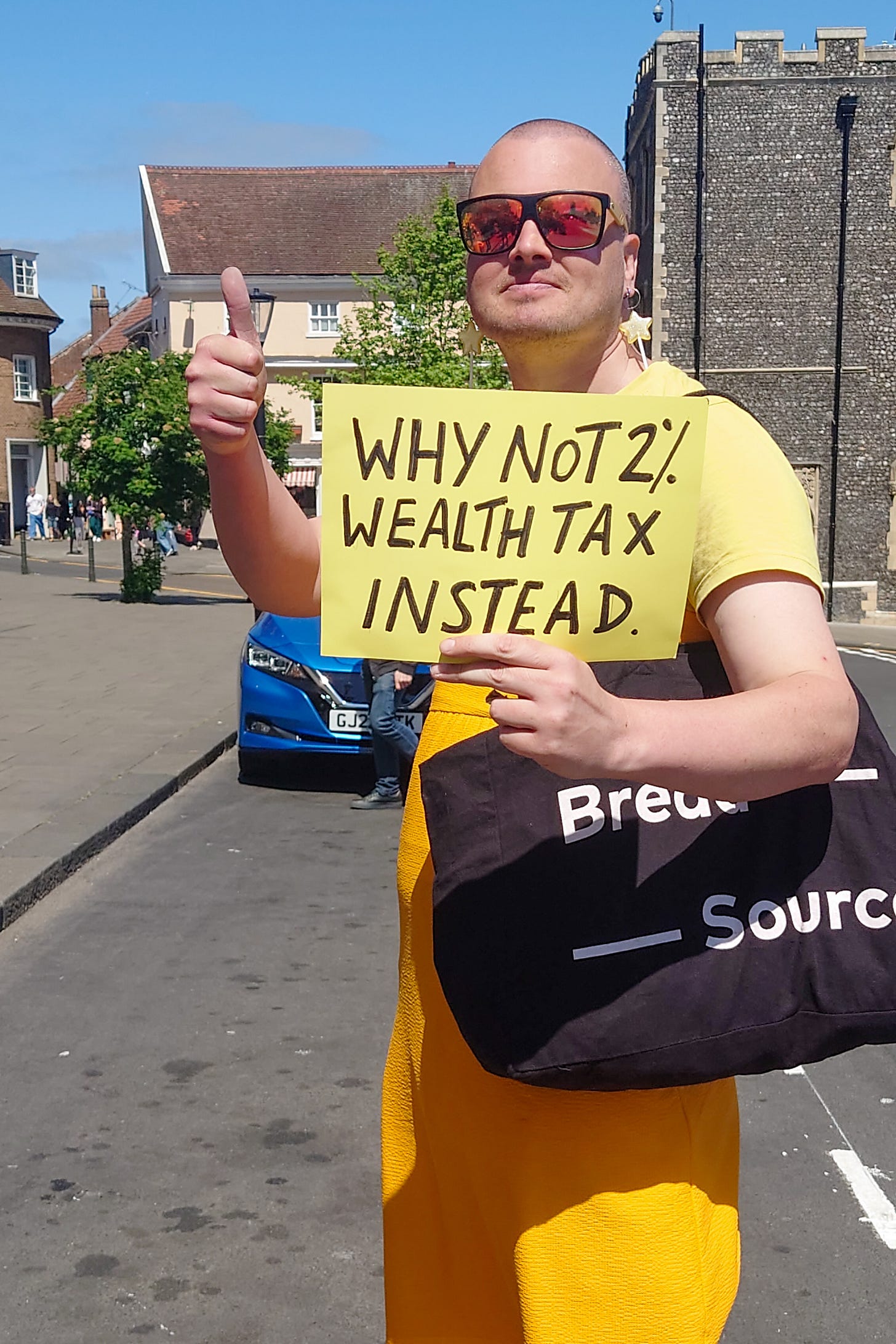

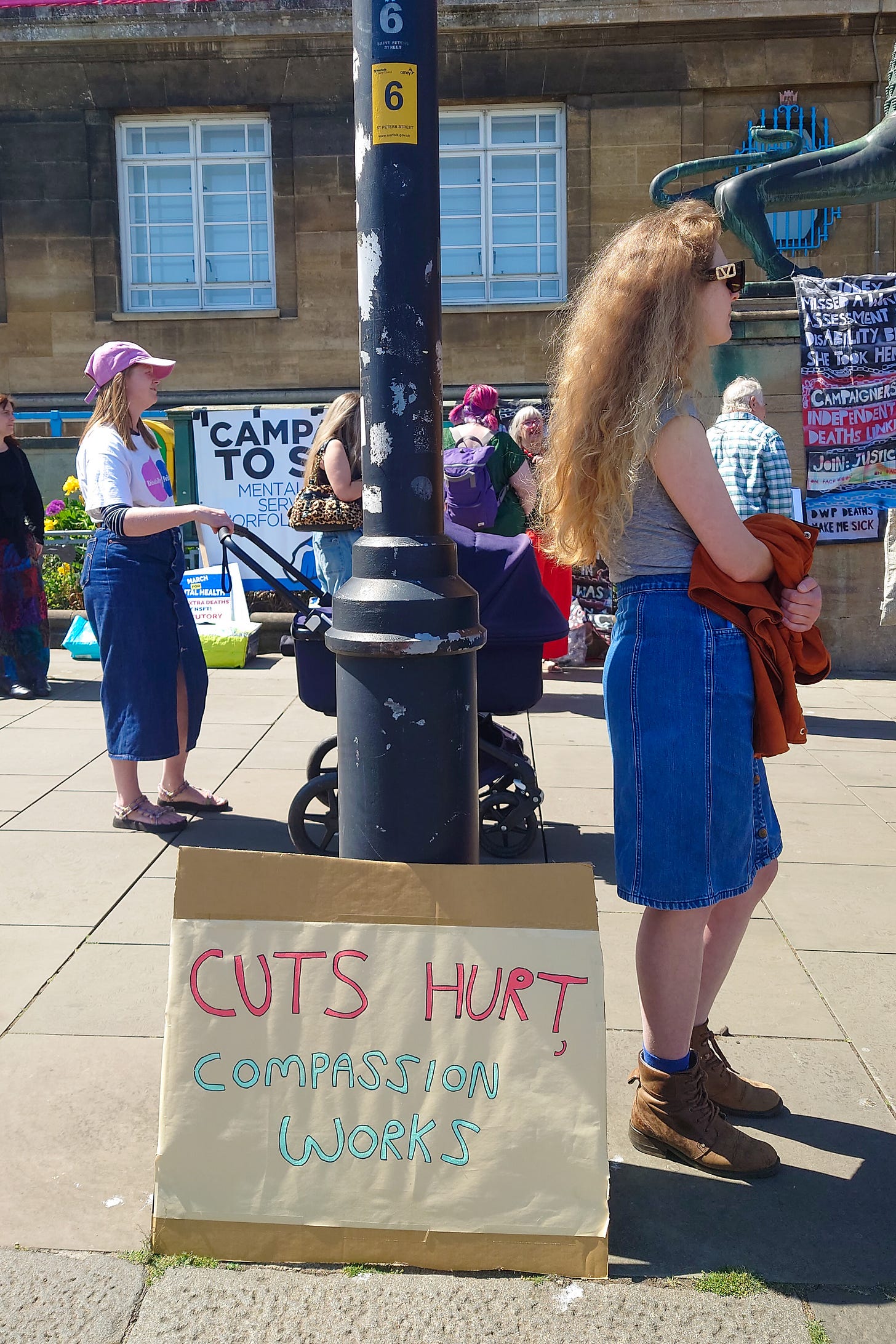
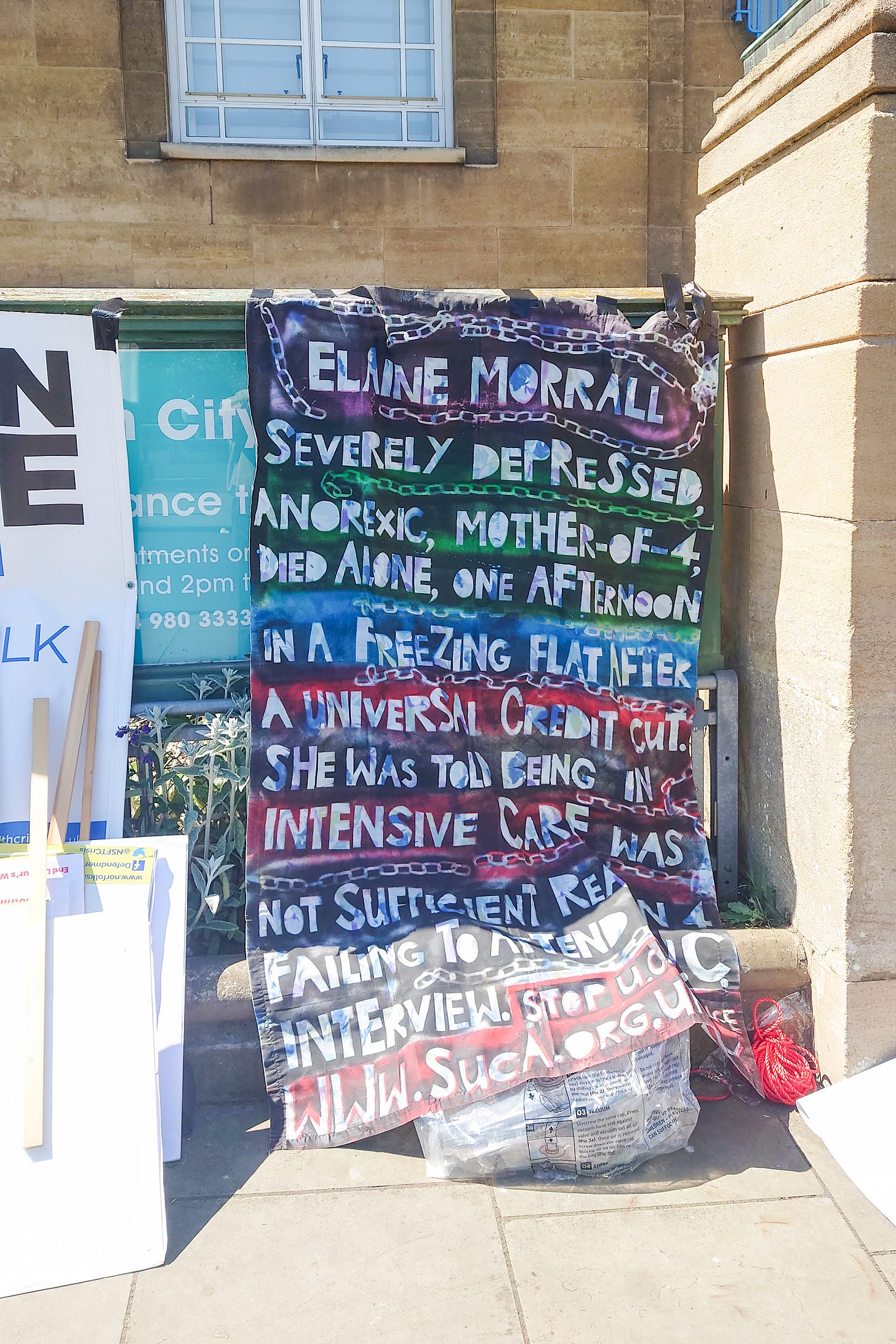
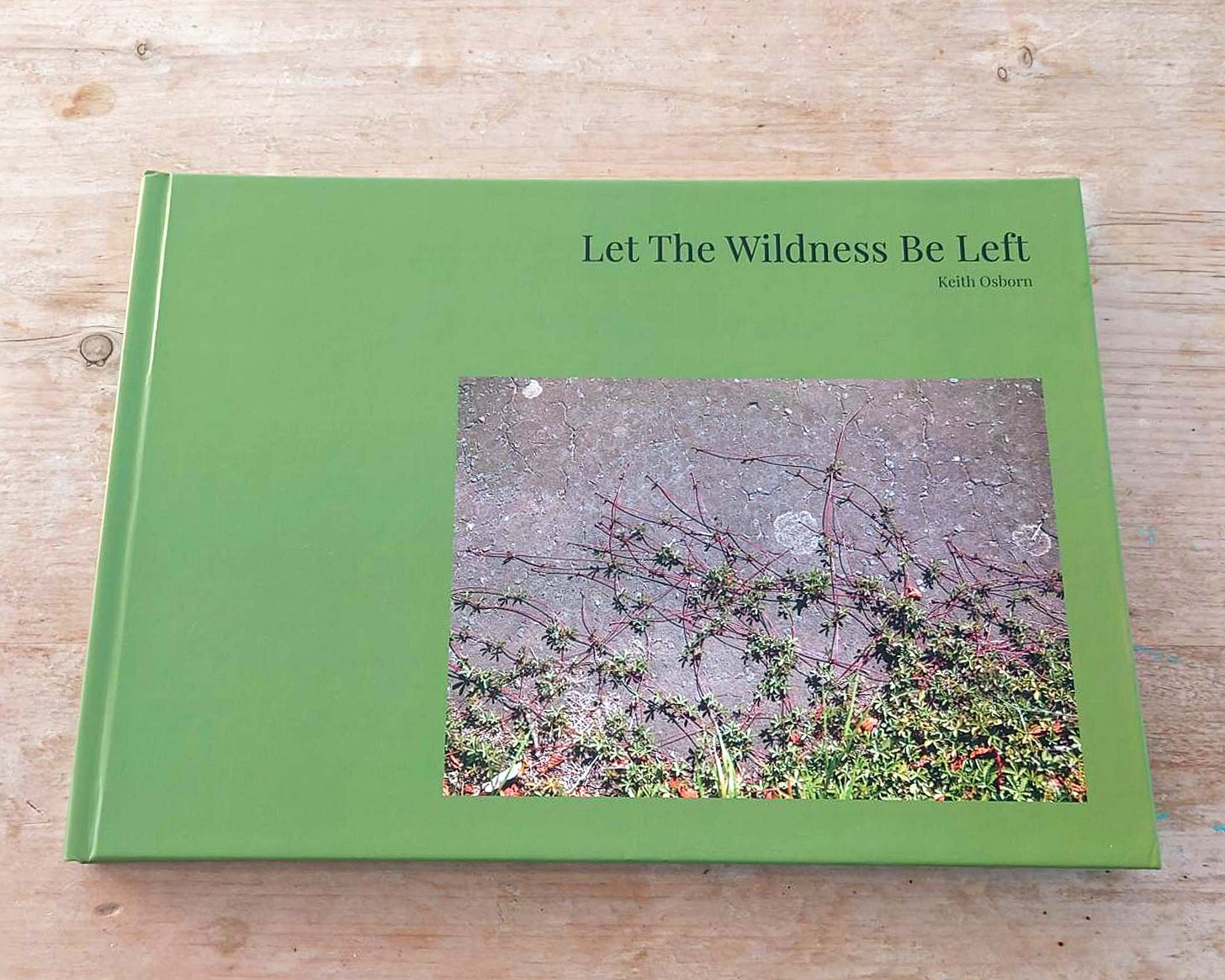
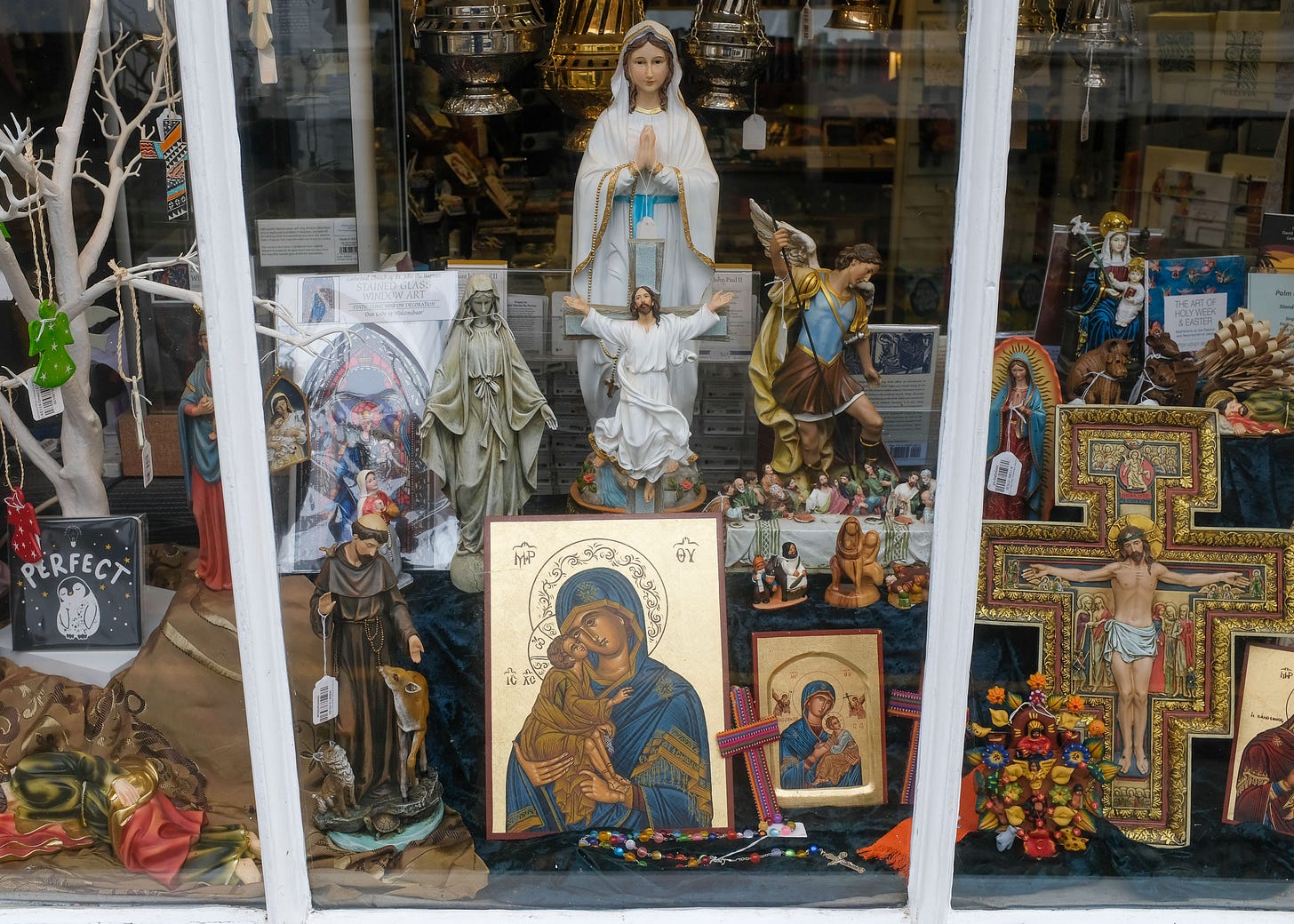
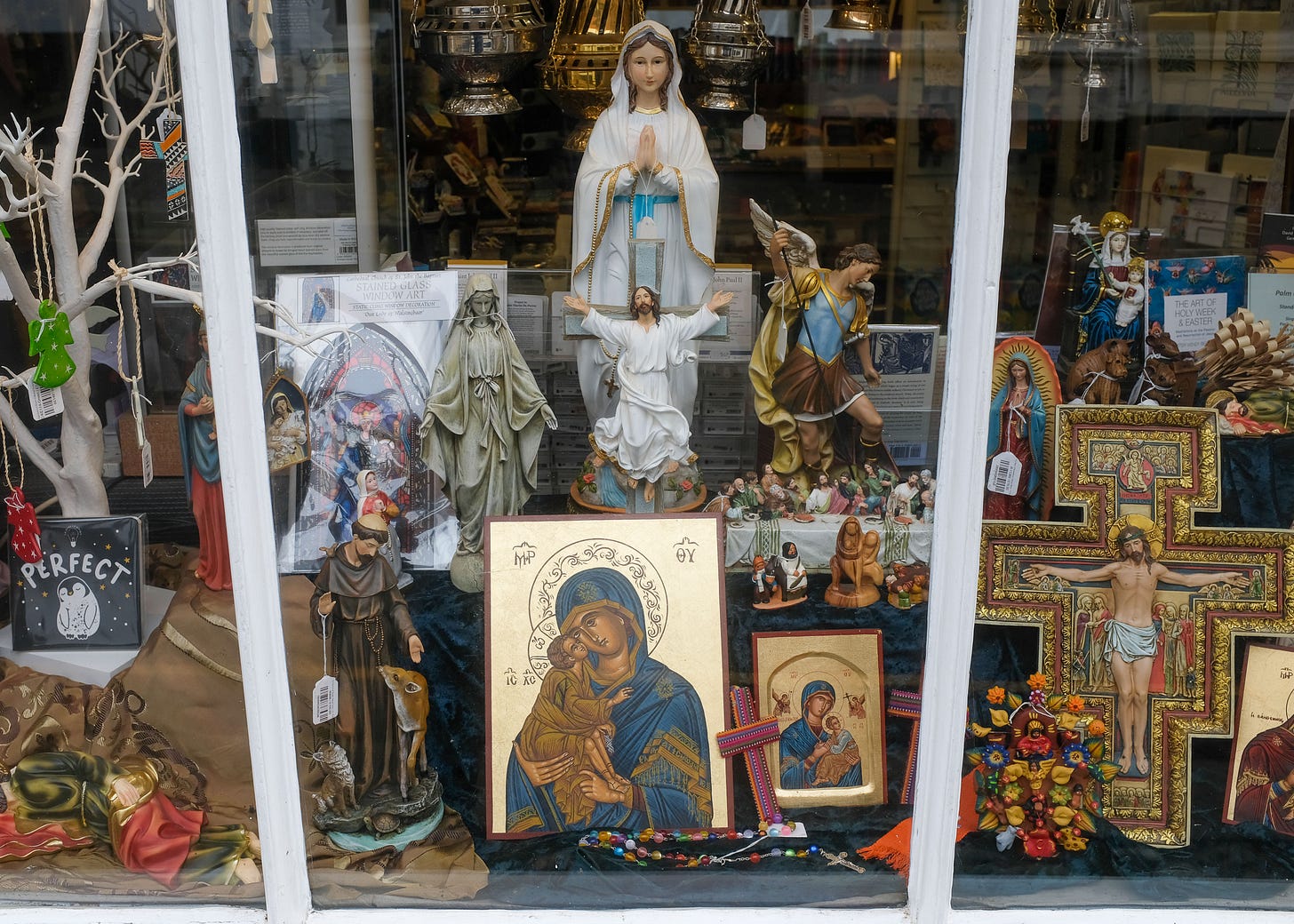
The Director of Engagement and Education at the Shrine is very fond of penguins.
Your talk at the Library was fascinating and your book is very diverse and interesting. Great photos this week. The workshop sounded interesting too. Keep up the good work.🫠